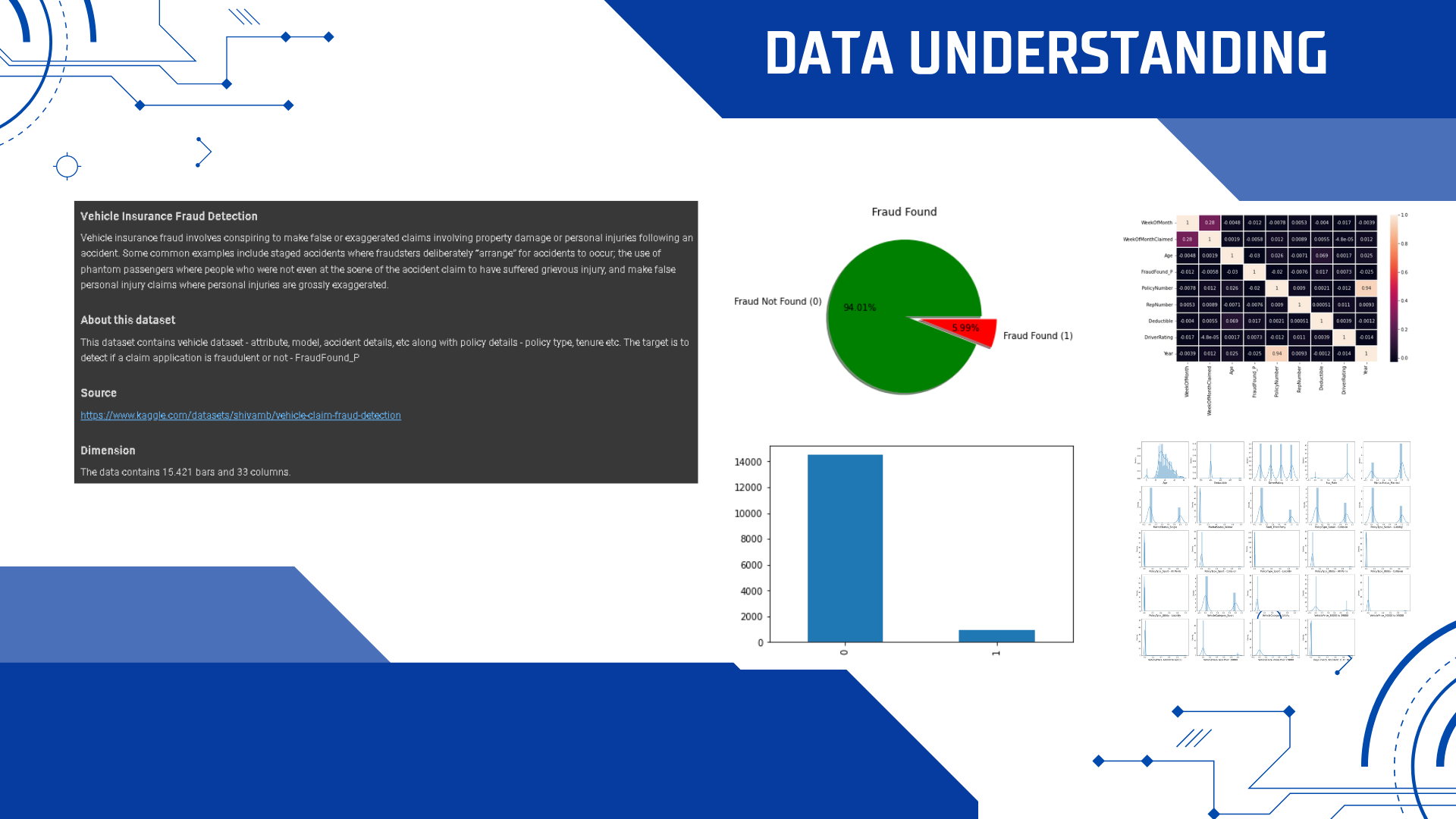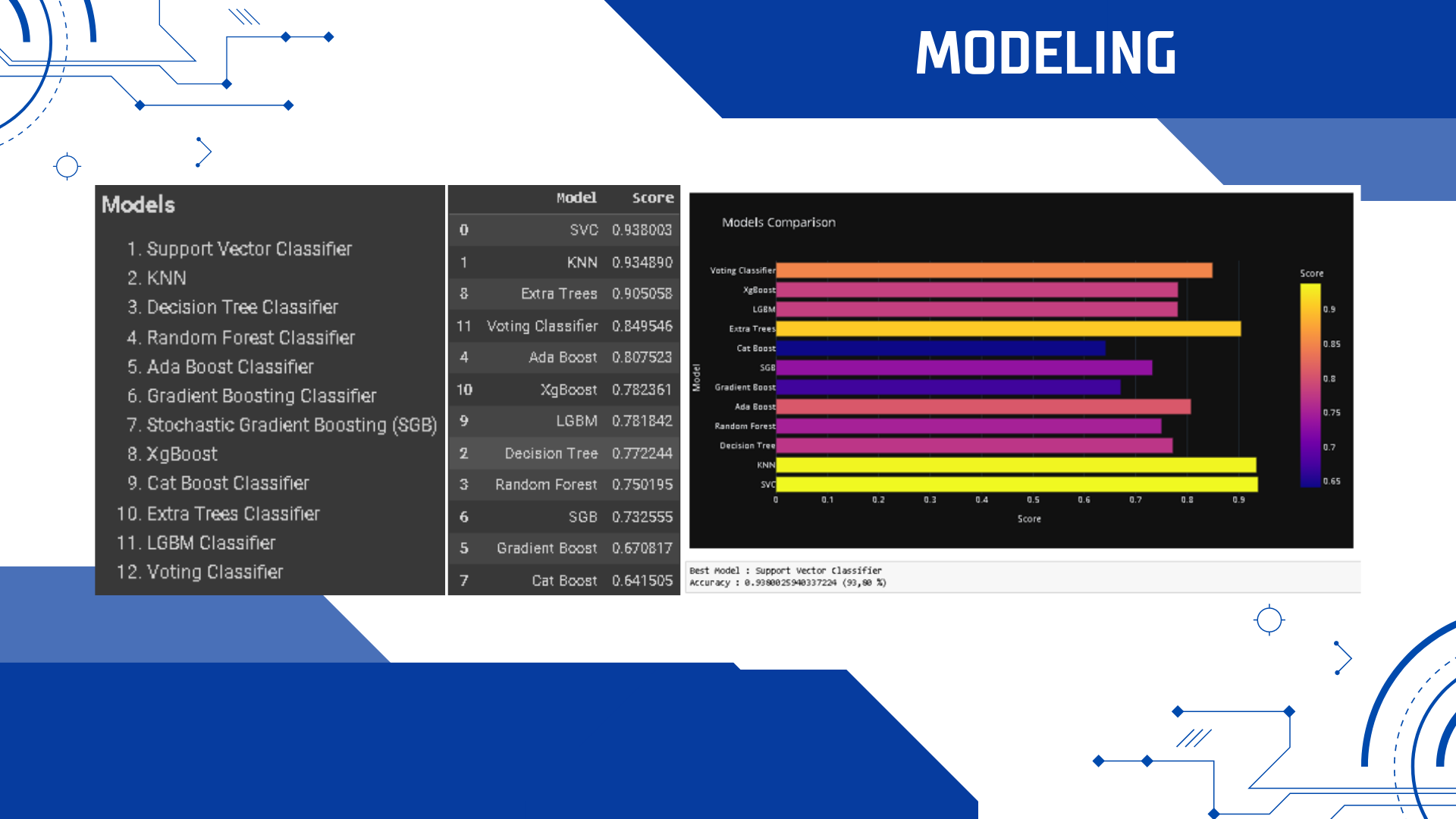
Vehicle Insurance Claim Fraud Detection
Trianto Haryo Nugroho
Summary
This project looks for the best model performance from 12 classification models to detect fraud in automobile insurance claims. The best model is the Ada Boost Classifier with 95.90% accuracy.
Description
Vehicle Insurance Claim Fraud Detection (Comparison 12 Models)
By: Trianto Haryo Nugroho
Data Understanding
Vehicle Insurance Fraud Detection
Vehicle insurance fraud involves conspiring to make false or exaggerated claims involving property damage or personal injuries following an accident. Some common examples include staged accidents where fraudsters deliberately “arrange” for accidents to occur; the use of phantom passengers where people who were not even at the scene of the accident claim to have suffered grievous injury, and make false personal injury claims where personal injuries are grossly exaggerated.
About this dataset
This dataset contains vehicle dataset - attribute, model, accident details, etc along with policy details - policy type, tenure, etc. The target is to detect if a claim application is fraudulent or not - FraudFound_P
Source
https://www.kaggle.com/datasets/shivamb/vehicle-claim-fraud-detection
Dimension
The data contains 15.421 bars and 33 columns.
Google Colab Link:
https://colab.research.google.com/drive/1o85fAtC-82uQbY1ENMWBoYZGoszUjwiE?usp=sharing
Exploratory Data Analysis (EDA)
Import Library
Upload Dataset
Read Dataset
Display 5 Samples
Dataset Information
The dataset consists of 15.421 rows and 33 columns columns
Checking Missing Values
There is no missing value in the dataset
Checking Data Duplicates
There is no duplicate data in the dataset
Checking Shape or Dimension
Checking Label Proportion
Significant differences in the proportion of labels in the classification case can cause computers/machines to not learn well so that the model formed can only recognize dominant labels.
There is a significant difference in the proportion of labels in this dataset so later we will balance the dataset.
Descriptive Statistics
Histogram
The highest age is between 30-40 years old. The highest Fraud_Found_P is 0. The highest deductible is between 400. There were no significant differences between driver ratings.
Pair Plot
Correlation
Checking for Multicollinearity
From the above plot, we can see there is only a low correlation between features, we don't need to remove it.
Checking Number of Unique Values
Remove Unnecessary Columns
Data Preprocessing
Separating the feature and target columns
Encoding Categorical Columns
Seeing the percentage distribution of categorical data, if there is one value that dominates the feature, it will be discarded.
Extracting Categorical Columns
Printing Unique Values of Each Column
Get Dummies from Categorical Columns
Extracting the Numerical Columns
Combining Numerical and Categorical Columns
The data looks good, let's check for outliers.
Outliers Detection
Outliers are present in some numerical columns we will scale numerical columns later.
Split Dataset
Normalization
Balancing the Dataset using oversampling (SMOTE)
Reduce Overfitting using Principal Component Analysis (PCA)
Modeling
1. Support Vector Classifier
Fit the model
Model Evaluation
2. KNN
Fit the model
Model Evaluation
3. Decision Tree Classifier
Fit the model
Model Evaluation
Hyperparameter tuning
Print best parameters and the best score
Fit the best estimator
Model Evaluation
4. Random Forest Classifier
Fit the model
Model Evaluation
5. Ada Boost Classifier
Fit the model using hyperparameter tuning
Print the best parameters and the best score
Fit the best estimator
Model Evaluation
6. Gradient Boosting Classifier
7. Stochastic Gradient Boosting (SGB)
Fit the model and model evaluation
8. XGBoost Classifier
Fit the model
Model Evaluation
Hyperparameter tuning
Model Evaluation after Hyperparameter tuning
9. Cat Boost Classifier
Install Cat Boost
Fit the model
Model Evaluation
10. Extra Trees Classifier
Fit the model and model evaluation
11. LGBM Classifier
Fit the model and model evaluation
12. Voting Classifier
Fit the model
Model Evaluation
Model Performance Comparison
Model Performance Comparison Visualization
Conclusion
Best Model : Ada Boost Classifier
Accuracy : 0.958958 (95,90 %)
Informasi Course Terkait
Kategori: Data Science / Big DataCourse: Data Science






